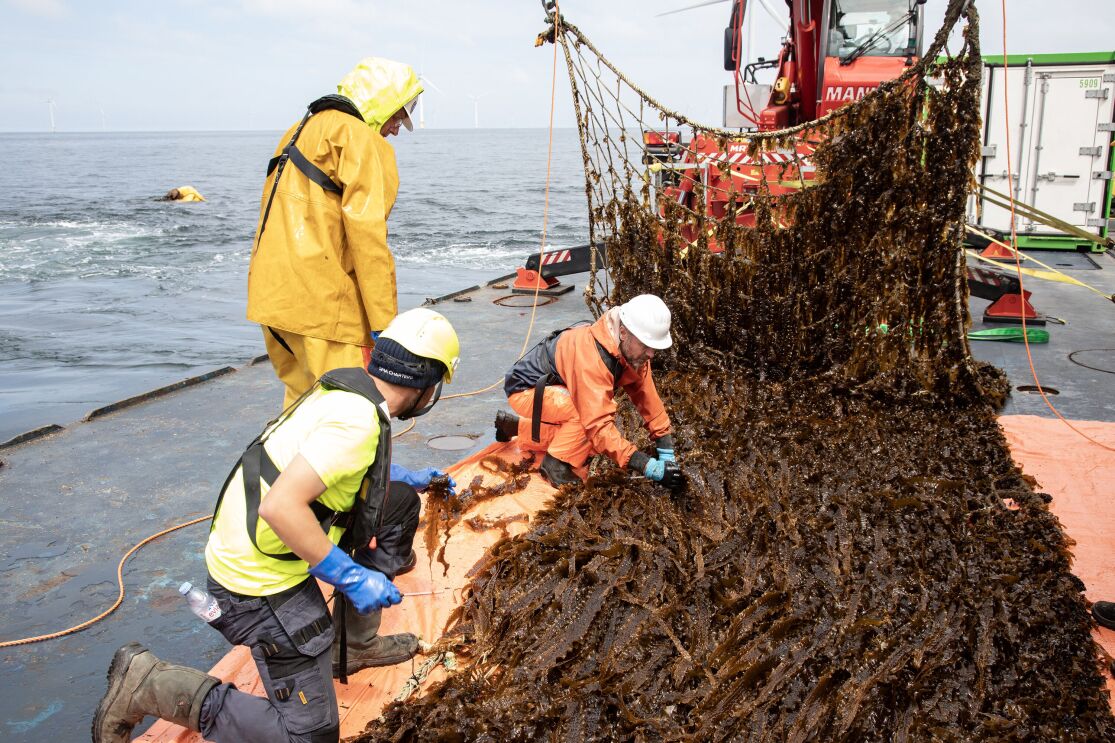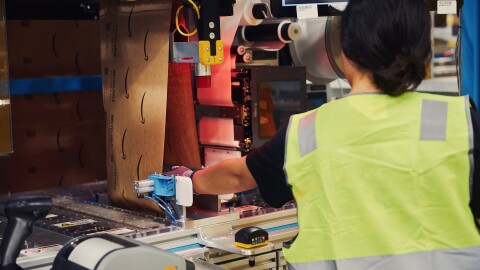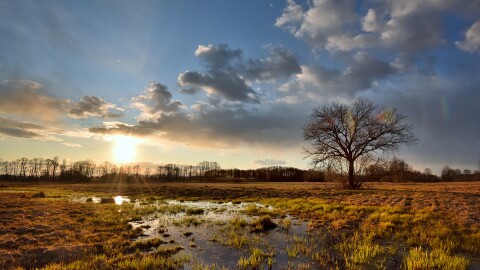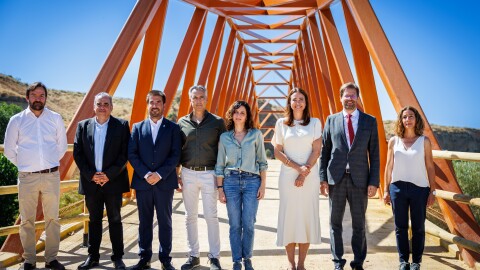Seaweed farmers have made the first-ever harvest at North Sea Farm 1, a commercial-scale seaweed farm located off the coast of the Netherlands in the North Sea. The farm, which is uniquely located in a field of wind turbines, was created by North Sea Farmers, a non-profit supported by Amazon’s Right Now Climate Fund, a $100 million initiative dedicated to climate and biodiversity projects that benefit both people and the planet.
The harvest provides valuable insights to researchers who are looking into how seaweed farms remove carbon from the atmosphere, contributing to climate resilience, and how to scale the cultivation of seaweed globally. In the longer term, seaweed farms could also promote biodiversity and reduce agricultural pressure on land.

The innovative project has received €2 million funding from Amazon's Right Now Climate Fund.
"The inaugural harvest of North Sea Farm 1 is a significant moment," said Eva Faict, Amazon Netherlands and Belgium country manager. "Together with North Sea Farmers, we have proven that cultivated seaweed farming among offshore wind turbines is a viable commercial concept.”
By locating the farm between offshore wind turbines, North Sea Farmers found a way of securing physical space for the farm that is protected from maritime traffic in the North Sea.
"Through ongoing scientific research, we aim to demonstrate whether farms like this can have a positive long-term impact on both biodiversity and climate change mitigation,” said Eef Brouwers, Managing Director of North Sea Farmers. “At the same time, we're proving that seaweed production within an existing offshore infrastructure is possible at a commercial scale.”

The harvesting process at North Sea Farm 1 involves the use of a special vessel carefully navigating between wind turbines to collect mature seaweed from four large nets, each measuring 50 metres by 3 metres, securely anchored to the seabed. Crews employ special equipment to gather the crop, which spans five hectares of the North Sea.

The harvested seaweed can be processed into a wide range of items, including textiles, foods and wellness products, demonstrating the relevance of commercial seaweed production for European markets. In general, because seaweed does not require land, fresh water, or fertilisers to grow, and it can be used to replace a number of materials traditionally farmed using chemicals on land.
A team of researchers working with North Sea Farmers—Plymouth Marine Laboratory, Deltares and Silvestrum Climate Associates—have been monitoring the farm for the past year using satellite data , as well as site visits. Following the harvest, the farm’s research partners will deliver a comprehensive analysis of the seaweed's growth, carbon absorption rates, and overall impact on carbon storage in the wider ecosystem, as well as potential effects on wildlife. This data can help to determine insights regarding upper scaling limits for future projects in which seaweed is grown between offshore wind turbines.
Professor Ana M Queirós, Plymouth Marine Laboratory’s Climate Change Lead and lead scientist on the project, said: “We’re very excited to understand the effects of the seaweed farm on the immediate and surrounding marine environment. Our analysis will follow the carbon from the seawater into the seaweed and the environment, and any effects on biodiversity. We will be taking seabed samples, water samples and in-situ monitoring of marine life and the use of advanced eDNA techniques to gain a detailed understanding of the developing habitat and the various species it may or may not be supporting. It’s vital projects like this are underpinned with rigorous scientific evidence, particularly given the urgency of the climate and biodiversity crisis and the need to find scalable mitigation measures that produce genuinely beneficial and sustainable outcomes.”
The harvest at the pioneering farm – located within the 'Hollandse Kust Zuid' (HKZ) wind farm, approximately 18 kilometres off the coast of Scheveningen – has been three years in the making. The project was conceived in 2022 and the first seaweed was planted in October 2024.
Consortium led by North Sea Farmers
Since 2014, North Sea Farmers (NSF) has been the (non-profit) representative of the European seaweed industry. NSF is leading this project with the goal of gathering essential evidence for the sector. The consortium includes researchers from Plymouth Marine Laboratory (PLM), Deltares, and Silvestrum Climate Associates, seaweed extract manufacturer Algaia, project developer Simply Blue Group, and maritime contractors Van Oord and Doggerland Offshore.
More information about Amazon’s nature-based investments across Europe can be found here.












